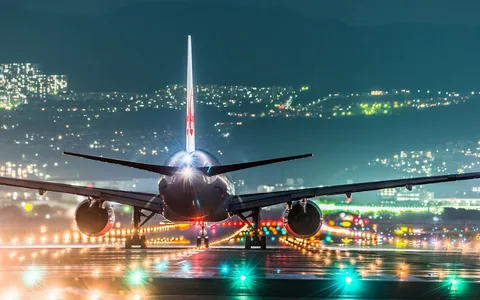Aviation: Soaring Through History

Introduction
Aviation, the art and science of flight, has captivated humanity for centuries. From the mythical dreams of flight in ancient times to the modern marvels of commercial air travel, the journey of aviation reflects human ingenuity, technological advancements, and the relentless pursuit of exploration. This article explores the evolution of aviation, its key milestones, and its impact on society.
Early Dreams of Flight
Ancient Inspirations
The dream of flight has existed for millennia. Ancient civilizations, such as the Greeks and Chinese, crafted mythologies around flying. The legend of Icarus, who flew too close to the sun, and the invention of kites in China showcased humanity's fascination with the skies.
The 19th Century: Theoretical Foundations
The 19th century laid the groundwork for modern aviation. Pioneers like Sir George Cayley identified fundamental principles of flight, including lift and drag. In 1891, Otto Lilienthal made the first controlled flights with his gliders, demonstrating the possibilities of heavier-than-air flight.
The Birth of Powered Flight
The Wright Brothers
The dawn of powered flight came in the early 20th century, with the Wright brothers’ historic flight on December 17, 1903. Orville and Wilbur Wright’s Flyer soared for 12 seconds, marking a pivotal moment in aviation history. Their innovative approach to control and stability set the stage for future advancements.
The Golden Age of Aviation
The period between the two World Wars is often referred to as the Golden Age of Aviation. Aircraft technology advanced rapidly, with iconic planes like the Douglas DC-3 and the Boeing 247 revolutionizing commercial air travel. Aviation became a popular mode of transport, connecting distant cities and fostering international trade.
Military Aviation and World War II
Advancements Driven by Conflict
World War I and II accelerated aviation advancements, leading to significant improvements in aircraft design and performance. Fighter planes like the Spitfire and B-29 Superfortress showcased the power and potential of aviation in warfare. The war also stimulated the development of radar and jet propulsion technology.
The Birth of Jet Travel
The post-war era ushered in the Jet Age. The introduction of the de Havilland Comet in 1949 marked the beginning of commercial jet travel, dramatically reducing travel time and increasing passenger capacity. This period saw the rise of major airlines and the expansion of global air travel networks.
The Modern Era of Aviation
Technological Innovations
The late 20th and early 21st centuries brought remarkable technological advancements. The introduction of advanced avionics, materials like carbon fiber, and more efficient engines has led to safer and more fuel-efficient aircraft. Innovations like fly-by-wire technology have enhanced aircraft control and performance.
The Rise of Low-Cost Carriers
In the 1980s and 1990s, low-cost carriers transformed the aviation landscape. Airlines like Southwest and Ryanair made air travel accessible to millions, fostering a new era of tourism and economic growth. This democratization of air travel allowed more people to explore the world.
Challenges and Sustainability
Environmental Concerns
As air travel grew, so did concerns about its environmental impact. Aviation is a significant contributor to greenhouse gas emissions, prompting the industry to seek sustainable solutions. Innovations like biofuels, electric aircraft, and improved air traffic management are being explored to reduce the carbon footprint of flying.
Safety and Security
Safety and security remain paramount in aviation. The tragic events of September 11, 2001, prompted heightened security measures and protocols worldwide. The aviation industry has continuously worked to improve safety, utilizing advanced technologies to mitigate risks.
The Future of Aviation
Emerging Technologies
The future of aviation is set to be shaped by emerging technologies. Autonomous flying vehicles, electric and hybrid aircraft, and urban air mobility are on the horizon. Companies are investing in research and development to create innovative solutions for efficient, safe, and environmentally friendly air travel.
Space Tourism
The dream of space travel is becoming a reality, with private companies like SpaceX and Blue Origin leading the charge. The advent of space tourism could revolutionize the concept of travel, expanding human exploration beyond our planet.
Conclusion
Aviation has come a long way since the Wright brothers’ first flight. It has transformed how we connect, explore, and experience the world. As the industry continues to evolve, embracing new technologies and addressing environmental challenges, aviation will remain a testament to human ingenuity and our enduring desire to soar. The skies are no longer the limit; they are just the beginning of an exciting journey into the future.
- Arts
- Business
- Computers
- Giochi
- Health
- Home
- Kids and Teens
- Money
- News
- Recreation
- Reference
- Regional
- Science
- Shopping
- Society
- Sports
- Бизнес
- Деньги
- Дом
- Досуг
- Здоровье
- Игры
- Искусство
- Источники информации
- Компьютеры
- Наука
- Новости и СМИ
- Общество
- Покупки
- Спорт
- Страны и регионы
- World


